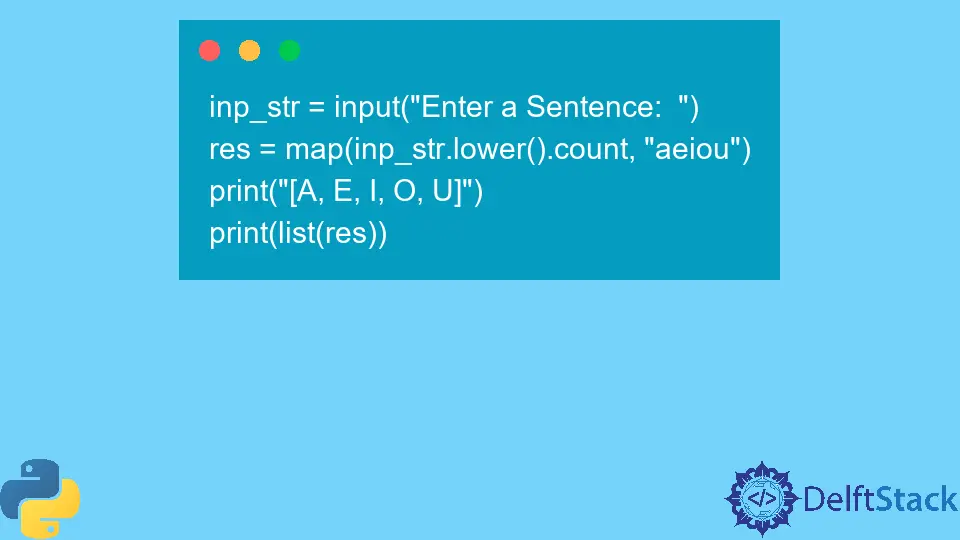How to Count Vowels in a String Using Python
- Method 1: Using a Simple Loop
- Method 2: Using List Comprehension
- Method 3: Using Regular Expressions
- Conclusion
- FAQ

Counting vowels in a string is a common task in programming, especially for those who are just starting their journey with Python. Whether you’re analyzing text data, creating a word counter, or simply practicing your coding skills, knowing how to count vowels can be quite useful. In this compact tutorial, we’ll explore different methods to count vowels in a string using Python. Each method will be accompanied by clear code examples and detailed explanations to help you understand the logic behind the implementation. By the end of this article, you’ll have a solid grasp of how to efficiently count vowels in any string using Python.
Method 1: Using a Simple Loop
One of the most straightforward ways to count vowels in a string is by using a simple loop. This method involves iterating through each character in the string and checking if it is a vowel. Let’s take a look at the code.
def count_vowels_loop(input_string):
vowels = "aeiouAEIOU"
count = 0
for char in input_string:
if char in vowels:
count += 1
return count
# Example usage
result = count_vowels_loop("Hello World")
print(result)
Output:
3
In this method, we define a function called count_vowels_loop, which takes a string as input. We create a string vowels that contains all the vowels (both lowercase and uppercase). We initialize a counter variable count to zero. The loop iterates through each character in the input string, checking if it exists in the vowels string. If it does, we increment the count. Finally, the function returns the total count of vowels found.
This method is simple and effective, making it an excellent choice for beginners. Its readability and straightforward logic help in understanding how loops work in Python, while also providing a practical application of counting characters in a string.
Method 2: Using List Comprehension
For those who prefer a more Pythonic approach, list comprehension is a fantastic way to count vowels in a string. This method is not only concise but also leverages Python’s powerful features to achieve the same result more elegantly. Let’s see how it works.
def count_vowels_comprehension(input_string):
vowels = "aeiouAEIOU"
return sum(1 for char in input_string if char in vowels)
# Example usage
result = count_vowels_comprehension("Hello World")
print(result)
Output:
3
In this method, we define the function count_vowels_comprehension. Instead of using a loop, we use a generator expression inside the sum() function. This expression iterates through the input string and counts each vowel by generating a 1 for every vowel found. The sum() function then adds these 1s together to get the total count of vowels.
This approach is efficient and concise, making it ideal for those who appreciate minimalistic code. It showcases the power of Python’s list comprehension, allowing you to perform tasks in fewer lines of code while maintaining clarity.
Method 3: Using Regular Expressions
If you’re looking for a more advanced technique, using regular expressions (regex) to count vowels is a great option. Regular expressions provide a powerful way to search for patterns in strings. Let’s explore how to use regex for counting vowels.
import re
def count_vowels_regex(input_string):
return len(re.findall(r'[aeiouAEIOU]', input_string))
# Example usage
result = count_vowels_regex("Hello World")
print(result)
Output:
3
In this method, we first import the re module, which is Python’s built-in library for working with regular expressions. The function count_vowels_regex uses the re.findall() method to find all occurrences of vowels in the input string. The regular expression pattern [aeiouAEIOU] matches any vowel, whether uppercase or lowercase. The len() function then counts the number of matches found.
Using regular expressions can be particularly useful when dealing with more complex string patterns. This method is efficient and can be easily adapted for different use cases, such as counting consonants or other specific characters.
Conclusion
Counting vowels in a string using Python can be accomplished through various methods, each with its own advantages. Whether you choose a straightforward loop, a concise list comprehension, or the powerful regex approach, the key is to understand the logic behind each method. As you practice these techniques, you’ll not only improve your coding skills but also gain confidence in manipulating strings in Python. Remember, the goal is to find the method that works best for you and your specific needs.
FAQ
-
How do I count vowels in a string without using a loop?
You can use list comprehension or regular expressions to count vowels without an explicit loop. -
Can I count both uppercase and lowercase vowels?
Yes, all methods shown in this tutorial account for both uppercase and lowercase vowels. -
What are the performance implications of these methods?
While all methods are efficient for small strings, regex may be slower for very large strings due to its complexity. -
Can I modify these methods to count consonants instead?
Yes, you can easily modify the vowel lists or regex patterns to count consonants by changing the characters you search for. -
Are there built-in functions in Python to count vowels?
Python does not have a built-in function specifically for counting vowels, but you can create your own using the methods discussed.